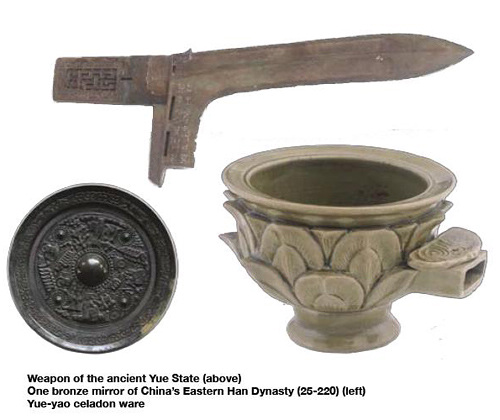|
 |
|
(COURTESY OF SUN HAIFANG) |
Thin, delicate and lustrous, Yue-yao celadon, which was originally offered to the imperial family, has made incredible contributions to world civilization. In the Tang Dynasty (618-907), it began to be exported to Pakistan, Iran, Egypt and Japan, and has since changed people's living habits in Southeast Asian countries. Egypt, as well as other African countries, has modified the craftwork to enrich their ceramic industry.
"As a non-profit public organization committed to social development, museums should also be a place of leisure, besides being a place where citizens learn about ancient culture," said Sun.
So far, the museum has received more than 500,000 visitors. Visitors have been admitted to the museum for free since January 1, 2011.
Compared with public-funded museums, private museums have many disadvantages, which created difficulties in operating a private museum.
"We don't enjoy government financial support but still have to pay many taxes because we are entrepreneurs," said Sun.
The local government has, however, provided some financial supports. In 2010, the museum obtained 100,000 yuan ($15,625) from the local government, but it was far from enough.
"In the long run, private museums should be self-sustained rather than relying on governmental funds," said Sun.
So Sun turned to an operation model which helps the museum to survive on its own. He bought a downtown area of 8,800 square meters for 72 million yuan ($11.3 million). About 3,500 square meters is for commercial use, and the other part is used as an exhibition area.
"We have operated the museum with money made from the commercial projects," said Sun.
This practice proved successful. Despite the high operating cost of more than 2 million yuan ($321,500) a year, the museum runs smoothly and even has extra money to purchase further cultural relics.
In addition, after years of experiments, Sun found a private museum's strength hinges on whether it has developed its characteristics catering to a particular niche interest of audiences. With this perception, Sun expanded the museum's services into arts collection, tourism and education, all centered on the Yue civilization and relevant collections.
The museum also attaches great importance to the training of its working staff. Altogether, it has 37 employees now. In order to provide excellent service to visitors, the museum organizes training for them every fortnight. This also improves their understanding of the exhibition items and their awareness of exhibition item security.
Rise of Private Museums
Greater numbers of private museums are emerging in China, as a result of booming private economy.
Antique collection has surged since the beginning of this century. Quite a number of enterprises, organizations and individuals have set up private museums with focus on different cultures.
This trend is especially prominent in Zhejiang Province, where deep-pocketed individuals have an intense passion for collection. The provincial government says the number of antique items in the hands of private collectors now surpasses that in the provincial museum.
And private museums can't be so active in Zhejiang without encouragement and support from the provincial government.
Private-funded museums enjoy the same preferential policies for land use and tax reduction as public museums do, said Shen Kunrong, Deputy Director of the Museum Department of Zhejiang Culture Relic Bureau.
For instance, Zhejiang Province released a regulation on cultural
relics protection in 2003. The regulation says the government will continue to encourage and support private investors to establish private museums, and offer equal policies to public-funded and private museums on planning and construction, land acquisition, and tax reduction.
Given the rise of private museums in recent years, the Central Government and local governments have released a series of regulations and policies to guide the approval, establishment and operation of private museums.
On January 1, 2006, the Measures for the Administration of Museums by the Ministry of Culture came into effect. It pledges government support to the development of museums and encourages individuals, corporations or organizations to establish museums. It also outlines measures on private museum administration. | 